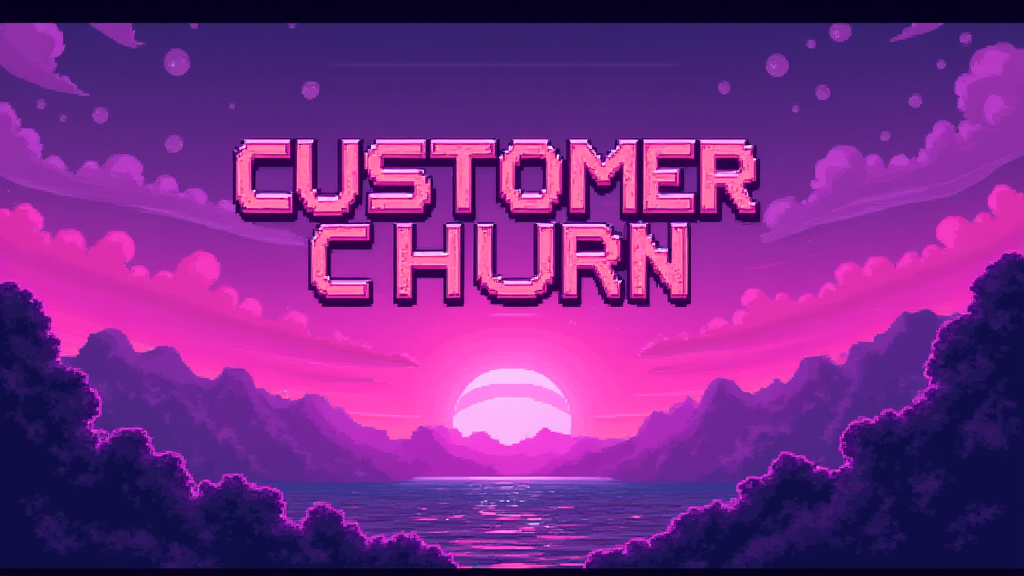Customer Churn: Definition and Impact

Published on: October 01, 2024
Customer churn, also known as customer attrition, refers to the phenomenon where customers stop doing business with a company or discontinue using its products or services. This crucial metric is a key indicator of business health and customer satisfaction in the realms of Sales Operations, Marketing Operations, and Revenue Operations.
Understanding Customer Churn 📊
Customer churn is typically expressed as a percentage of customers lost over a specific period. It's calculated using the following formula:
\[\text{Churn Rate} = \frac{\text{Number of Customers Lost}}{\text{Total Number of Customers at Start of Period}} \times 100\%\]
For example, if a company starts a quarter with 1,000 customers and loses 50 by the end, the churn rate would be 5%. For more information, check out our article on customer churn rate.
Importance of Tracking Customer Churn 🔍
Monitoring customer churn is crucial for several reasons:
- Revenue Impact: Losing customers directly affects a company's bottom line.
- Customer Lifetime Value: High churn rates reduce the overall customer lifetime value.
- Acquisition Costs: It's generally more expensive to acquire new customers than to retain existing ones.
- Market Position: Consistent customer loss can weaken a company's market position.
Common Causes of Customer Churn 🚫
Understanding the reasons behind customer churn is essential for developing effective retention strategies. Some common causes include:
- Poor customer service
- Lack of product value or relevance
- Competitive offerings
- Pricing issues
- Poor onboarding or user experience
Strategies to Reduce Customer Churn 🛠️
Implementing targeted strategies can help minimize customer churn:
- Improve Customer Service: Provide responsive, high-quality support to address customer issues promptly.
- Enhance Product Value: Continuously improve your offerings based on customer feedback and market trends.
- Implement Loyalty Programs: Reward long-term customers to incentivize continued engagement.
- Personalize Customer Experience: Use data analytics to tailor interactions and offerings to individual customer needs.
- Proactive Communication: Regularly engage with customers to address concerns before they lead to churn.
Measuring and Analyzing Customer Churn 📈
Effective churn analysis involves more than just calculating the rate. Consider the following approaches:
- Cohort Analysis: Examine churn rates among different customer groups or time periods.
- Predictive Modeling: Use machine learning algorithms to identify customers at risk of churning.
- Customer Feedback Analysis: Regularly collect and analyze customer feedback to identify pain points.
- Churn Reason Analysis: Categorize and quantify the reasons for customer departures.
Industry Benchmarks and Considerations 🏆
Churn rates vary significantly across industries and business models. Here's a general overview:
| Industry | Average Annual Churn Rate |
|---|---|
| SaaS | 5-7% |
| Telecom | 15-25% |
| E-commerce | 20-30% |
| Financial Services | 20-25% |
Remember, these are rough estimates, and individual company performance can vary widely based on factors like market position, product maturity, and customer base.
Conclusion: The Ongoing Battle Against Churn ⚔️
Customer churn is an inevitable part of business, but understanding and actively managing it is crucial for sustainable growth. By implementing robust churn analysis and prevention strategies, companies can improve customer retention, boost lifetime value, and ultimately drive long-term success. For expert tips on reducing churn, be sure to read our additional resources.
As you reflect on your own customer churn strategy, consider asking yourself:
- How does our churn rate compare to industry benchmarks?
- What are the primary reasons customers leave our business?
- How can we leverage data analytics to predict and prevent churn?
- What retention strategies have we not yet explored?
- How can we improve our onboarding process to set customers up for long-term success?
By continuously addressing these questions and refining your approach, you can build a more resilient customer base and drive sustainable growth in your Sales and Marketing operations.
















